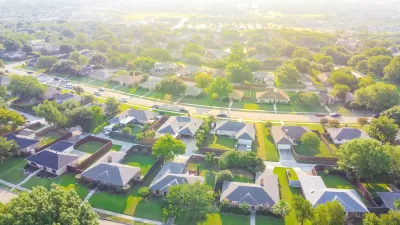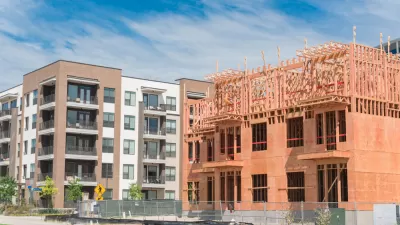The high cost of housing in the United States can be attributed in part to the high costs, regulatory and otherwise, of building new housing.

“The main factor driving the cost of all housing is the cost of building new housing,” writes Michael Andersen, arguing that “If we want our cities’ older homes to cost less, either to buy or rent, we need it to be less expensive to create a new home.” As Andersen explains, “in the end, pricing mostly comes down to cost. The price of existing homes is held down (or driven up), more than anything else, by the cost factors of creating new housing.”
If all of us deserve a home, and I happen to agree with the 1948 United Nations General Assembly that we all do, there’s no alternative to taxing and spending. And if we also want to avoid housing shortages like today’s, there’s also no alternative to making homes cost less to build.
According to Andersen, part of the problem stems from unnecessary legal requirements. Some mandatory items, like windows, indoor plumbing, and safe electrical cables, are “well worth their costs.” But “when our governments require homes to be a certain level of ‘nice’ to be allowed to exist, they’re making assumptions that don’t apply to everyone.” Loosening some of these requirements could reduce the cost of building new homes and, thus, the cost of housing. The source article links to Andersen’s more detailed proposals in Willamette Week and his discussion of the issue on the Week’s podcast.
FULL STORY: The Price of Old Homes Depends on the Cost of Building New Homes

Trump Administration Could Effectively End Housing Voucher Program
Federal officials are eyeing major cuts to the Section 8 program that helps millions of low-income households pay rent.

Planetizen Federal Action Tracker
A weekly monitor of how Trump’s orders and actions are impacting planners and planning in America.

Ken Jennings Launches Transit Web Series
The Jeopardy champ wants you to ride public transit.

Rebuilding Smarter: How LA County Is Guiding Fire-Ravaged Communities Toward Resilience
Los Angeles County is leading a coordinated effort to help fire-impacted communities rebuild with resilience by providing recovery resources, promoting fire-wise design, and aligning reconstruction with broader sustainability and climate goals.

When Borders Blur: Regional Collaboration in Action
As regional challenges outgrow city boundaries, “When Borders Blur” explores how cross-jurisdictional collaboration can drive smarter, more resilient urban planning, sharing real-world lessons from thriving partnerships across North America.

Philadelphia Is Expanding its Network of Roundabouts
Roundabouts are widely shown to decrease traffic speed, reduce congestion, and improve efficiency.
Urban Design for Planners 1: Software Tools
This six-course series explores essential urban design concepts using open source software and equips planners with the tools they need to participate fully in the urban design process.
Planning for Universal Design
Learn the tools for implementing Universal Design in planning regulations.
Ada County Highway District
Clanton & Associates, Inc.
Jessamine County Fiscal Court
Institute for Housing and Urban Development Studies (IHS)
City of Grandview
Harvard GSD Executive Education
Toledo-Lucas County Plan Commissions
Salt Lake City
NYU Wagner Graduate School of Public Service





























